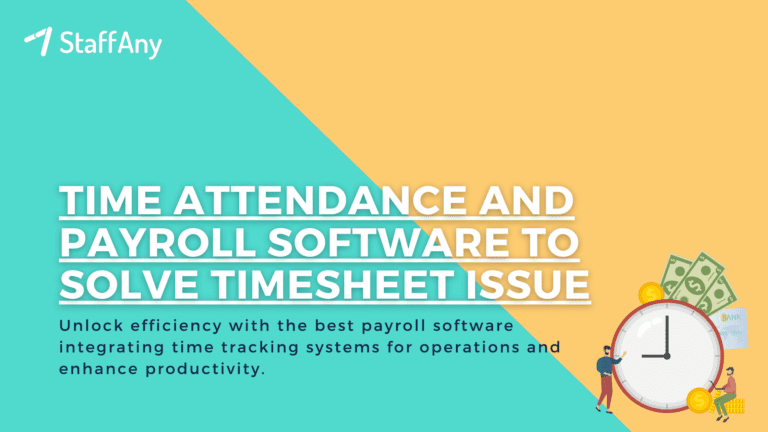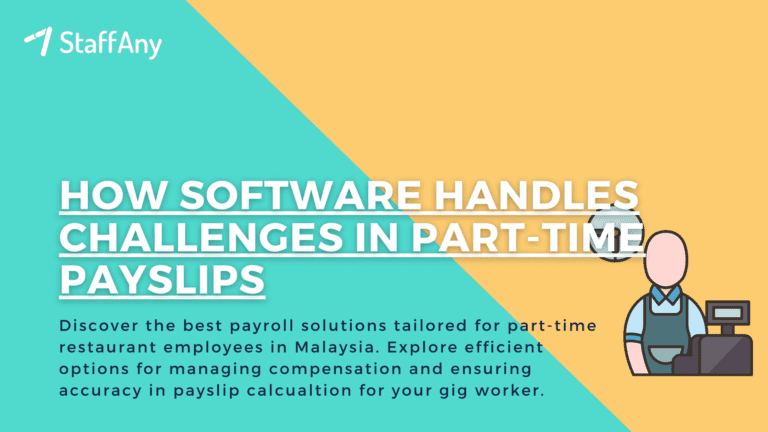Managing diversity in the workplace has become increasingly important in today’s globalised and diverse workplace. As companies strive to create a more inclusive workplace, they must implement strategies that promote Diversity, Equity, and Inclusion (DEI).
In this article, we will explore what managing diversity means in the workplace, why it is important, and ten effective strategies for managing diversity in the workplace. Let’s find out below!
What Does Managing Workplace Diversity Mean?

Managing diversity in the workplace is the practice of creating a workplace culture that is inclusive of individuals from diverse backgrounds, cultures, and experiences. This includes individuals of different gender, race, religion, age, sexual orientation, and ability.
Handling diversity involves creating an environment where all employees are valued and respected for who they are, regardless of their differences. This means that employees feel comfortable expressing their views, and their opinions are taken into consideration. It also involves creating policies and practices that promote equity and fairness for all employees.
To effectively manage diversity in the workplace, companies must prioritise creating a diverse and inclusive culture that respects the differences of all employees. This can be achieved by diversity efforts ranging from promoting open communication, fostering collaboration, to recognizing the contributions of all employees.
A diverse and inclusive workplace encourages employees to bring their whole selves to work, which can lead to increased creativity, innovation, and improved problem-solving.
Managing diversity also requires addressing any barriers to inclusivity that exist within the workplace, such as unconscious bias or systemic discrimination. By creating a workplace culture that values diversity and inclusion, companies can attract and retain top talent and improve their overall performance.
Read more: How to Measure Employee Turnover Rate
Why is It Important to Manage Diversity in the Workplace?
Managing diverse teams in the workplace is crucial for several reasons. Here are some of the key reasons why managing diversity is essential for organisations:
1. Promotes Innovation and Creativity
When individuals from diverse backgrounds come together, they bring different perspectives and experiences that can lead to new and innovative solutions. Managing diverse workplace and workforce encourage employees the exchange of ideas, which can foster creativity and innovation.
A diverse workforce can bring fresh perspectives to problem-solving and decision-making, leading to more innovative solutions and better business outcomes.
2. Improves Employee Engagement and Retention
Managing diverse environment and diverse groups can improve employee engagement and retention. When employees feel valued and respected for who they are, they are more likely to be engaged in their work and committed to the organisation.
An inclusive workplace culture can create a sense of belonging and foster positive relationships among employees. This can lead to higher levels of job satisfaction, increased productivity, and better retention rates.
3. Enhances Reputation and Brand Image
A diverse and inclusive workplace can enhance an organisation’s reputation and brand image. Customers and job seekers are increasingly looking for organisations that value diversity and promote inclusion.
By actively managing diversity, organisations can attract a more diverse customer base and increase their appeal to job seekers. A diverse and inclusive workplace can also help organisations build stronger relationships with stakeholders, suppliers, and other business partners.
Read more: Understanding Employee Management System and Its Benefits
4. Fosters Fairness and Equality
Managing diversity in the workplace promotes fairness and equality. By creating an inclusive workplace culture, organisations can ensure that all employees are treated fairly and have access to the same opportunities for career development and advancement. This can help to mitigate the effects of systemic discrimination and promote social justice.
5. Increases Cultural Competence
Managing diversity in the workplace can increase cultural competence among employees. Cultural competence refers to the ability to work effectively with individuals from diverse backgrounds.
By promoting diversity and inclusion, organisations can help employees develop a greater understanding and appreciation of different cultures, which can improve communication and collaboration in the workplace.
6. Improves Decision-Making
Managing diversity in the workplace can improve decision-making. When individuals with different perspectives and experiences come together, they are more likely to consider a wider range of options and perspectives.
This can lead to better-informed decisions that take into account the needs and perspectives of a diverse range of stakeholders.
Read more: 12 Employee Engagement Activities to Keep Your Staff Happy and Motivated
7. Supports Compliance with Legal Requirements
Managing diversity in the workplace can support compliance with legal requirements. Many countries, including Malaysia, have laws and regulations that prohibit discrimination on the basis of certain characteristics, such as race, gender, or age.
By actively managing diversity, organisations can ensure that they are in compliance with these legal requirements and avoid potential legal liabilities.
8. Aligns with Organisational Values and Goals
Managing diversity in the workplace aligns with many organisational values and goals, such as fairness, social responsibility, and innovation. By promoting diversity and inclusion, organisations can demonstrate their commitment to these values and goals, which can improve employee morale and foster a sense of pride among employees.
This can lead to improved business outcomes, such as increased productivity, profitability, and customer satisfaction.
Read more: How to Manage Restaurant Staff Well? 10 Pro Tips
10 Strategies for Managing Diversity in the Workplace

Managing diversity is not an easy task, especially in the workplace. Here are ten strategies for managing diversity in the workplace that you can try:
1. Establish Clear Diversity Goals and Objectives
Establishing clear diversity goals and objectives is a critical first step in managing diversity in the workplace. Organisations should set specific and measurable goals that reflect their commitment to diversity and inclusion.
These goals should be communicated to all employees, and progress should be regularly tracked and reported.
2. Promote Inclusive Leadership
Inclusive leadership is critical to managing diversity in the workplace. Leaders must model inclusive behaviours and create an environment where all employees feel valued and respected.
This can be achieved by promoting open communication, actively listening to employees, and taking action to address any barriers to inclusivity.
3. Foster Diversity and Inclusion Training
Providing diversity and inclusion training to all employees can help to create a more inclusive workplace culture. Training can help employees develop a greater understanding of diversity issues and learn strategies for promoting inclusivity.
Organisations should provide regular training and education opportunities to ensure that employees are aware of the importance of diversity and how to promote it.
Read more: Understanding Manpower Planning and Its Importance in F&B
4. Implement Bias Mitigation Strategies
Unconscious bias can be a significant barrier to inclusivity in the workplace. Organisations should implement bias mitigation strategies to address unconscious bias and promote fairness and equity. This can include strategies such as blind hiring, which removes identifying information from job applications to reduce the impact of bias.
5. Provide Employee Resource Groups
Employee Resource Groups (ERGs) can provide a valuable support network for employees from diverse backgrounds. ERGs can help employees connect with others who share similar experiences and provide a forum for discussing issues related to diversity and inclusion.
Organisations should encourage the formation of ERGs and provide resources and support to ensure their success.
6. Implement Flexible Policies and Practices
Flexible policies and practices can help to accommodate the needs of employees from diverse backgrounds. This can include offering flexible work schedules, providing accommodations for disabilities, and offering language support.
Organisations should review their policies and practices to ensure that they are inclusive and meet the needs of all employees.
Read more: Graveyard Shift: Meaning, Advantages, and Disadvantages
7. Foster Open Communication
Open communication is essential for managing diversity in the workplace. Organisations should promote open communication by providing channels for employees to share their thoughts and ideas, such as suggestion boxes or regular feedback sessions.
This can help to create an environment where all employees feel comfortable expressing their views and opinions.
8. Hold Managers Accountable for Diversity and Inclusion
Holding managers accountable for diversity and inclusion is critical to ensuring that diversity goals are achieved. Organisations should set clear expectations for managers and provide regular feedback on their progress towards meeting diversity goals.
Managers should be evaluated on their ability to create an inclusive workplace culture and promote diversity and inclusion. This can help to ensure that diversity and inclusion are prioritised at all levels of the organisation.
9. Foster Mentorship and Sponsorship Programs
Mentorship and sponsorship programs can be valuable tools for promoting diversity and inclusion in the workplace. These programs can help employees from diverse backgrounds develop the skills and connections they need to advance their careers.
Organisations should provide opportunities for employees to participate in mentorship and sponsorship programs and ensure that these programs are inclusive and accessible to all employees.
Read more: Understanding the Importance of Human Resource Planning
10. Encourage Diversity in Hiring and Promotion Practices
It is essential to encourage diversity in hiring and promotion practices to create a more diverse and inclusive workplace. Organisations should actively seek out candidates from diverse backgrounds and ensure that they are given equal consideration during the hiring and promotion process.
This can include implementing diversity quotas, establishing partnerships with diverse organisations, and expanding recruitment efforts to reach a more diverse candidate pool. By prioritising diversity in hiring and promotion practices, organisations can create a more inclusive workplace culture and reap the benefits of a diverse workforce.
Looking to manage diversity in your workplace effectively? StaffAny’s management reporting software can help. Our real-time reporting tool provides valuable insights into employee performance, productivity, and scheduling, allowing you to make data-driven decisions to promote inclusivity and diversity in your workplace.
Ready to take the first step towards managing diversity in your workplace? Visit StaffAny now to learn more about our products!











